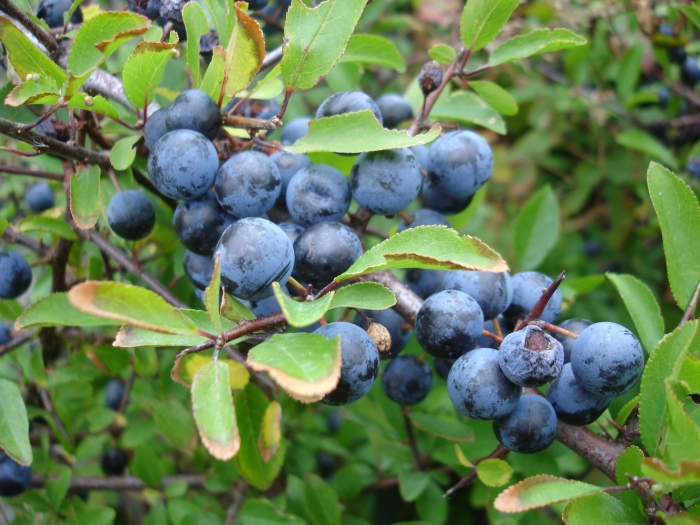Blackthorn
(Prunus spinosa)
Blackthorn (Prunus spinosa)
/
/

Martin Olsson
CC BY-SA 3.0
























































Estimated Native Range
Summary
Blackthorn is valued for its wildlife-friendly attributes, providing shelter and food for birds and insects. It is also appreciated for its dense, spiny branches, which make it an excellent choice for hedging and boundary planting. The plant is hardy and can tolerate a range of soil types, though it prefers well-drained soils. It is relatively low-maintenance, requiring only occasional pruning to maintain its shape and to remove deadwood. However, it can be prone to diseases such as silver leaf and bacterial canker. When grown outside its native range, Blackthorn may become invasive, so it is important to consult local guidelines before planting.CC BY-SA 4.0
Plant Description
- Plant Type: Tree, Shrub
- Height: 4-18 feet
- Width: 6-12 feet
- Growth Rate: Moderate
- Flower Color: White
- Flowering Season: Spring
- Leaf Retention: Deciduous
Growth Requirements
- Sun: Full Sun, Part Shade
- Water: Medium
- Drainage: Medium
Common Uses
Bee Garden, Bird Garden, Butterfly Garden, Drought Tolerant, Edible*Disclaimer: Easyscape's listed plant edibility is for informational use. Always verify the safety and proper identification of any plant before consumption., Fragrant, Hedges, Low Maintenance, Rabbit Resistant, Salt Tolerant, Showy Flowers
Natural Habitat
Native to open woodlands, hedgerows, and scrub areas across Europe and western Asia
Other Names
Common Names: Sloe, Sloe Of Europe, Slåen, Schlehe, Schwarzdorn, Prunellier, Erkšku Plume, Sleedoorn, Slån
Scientific Names: , Prunus spinosa, Prunus coronata, Prunus latiflora, Prunus densa, Prunus erythrocalyx, Prunus glomerata, Prunus subinermis, Prunus ericiflora, Prunus spinosa var. dasyphylla
GBIF Accepted Name: Prunus spinosa L.